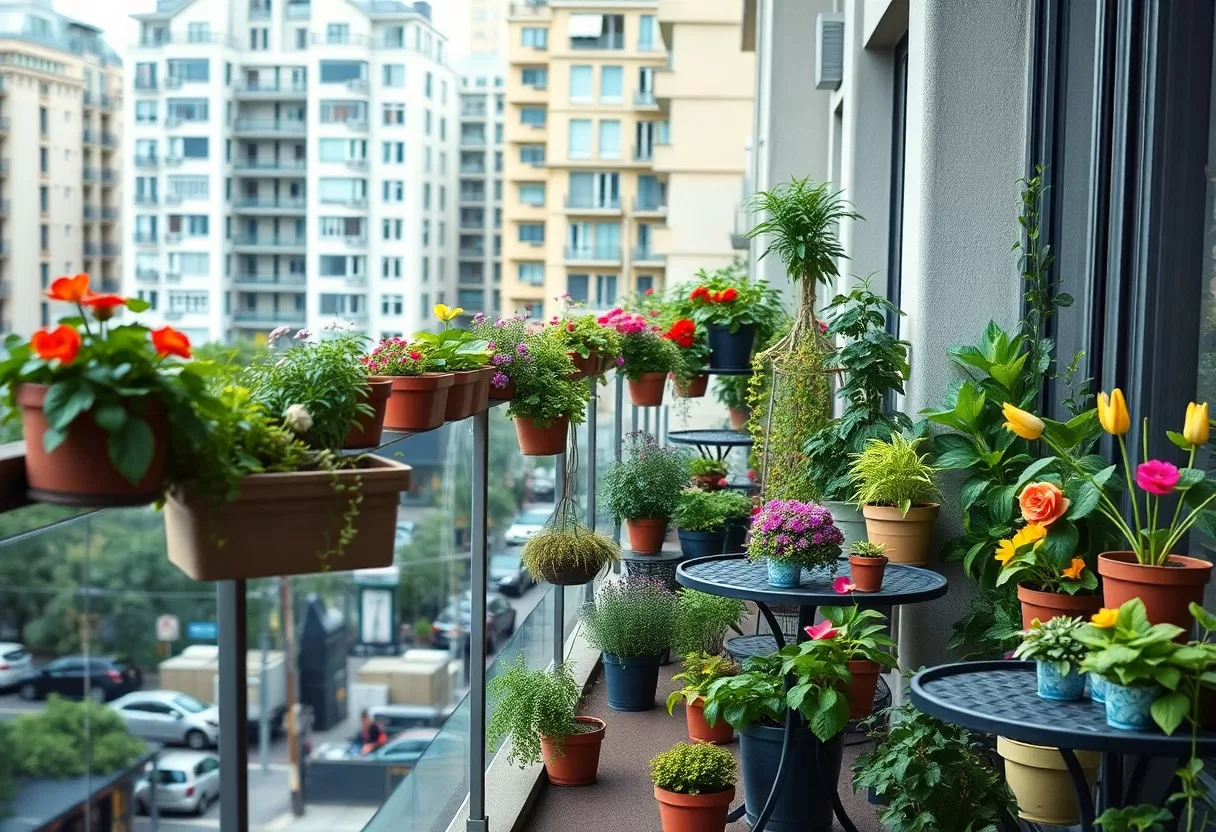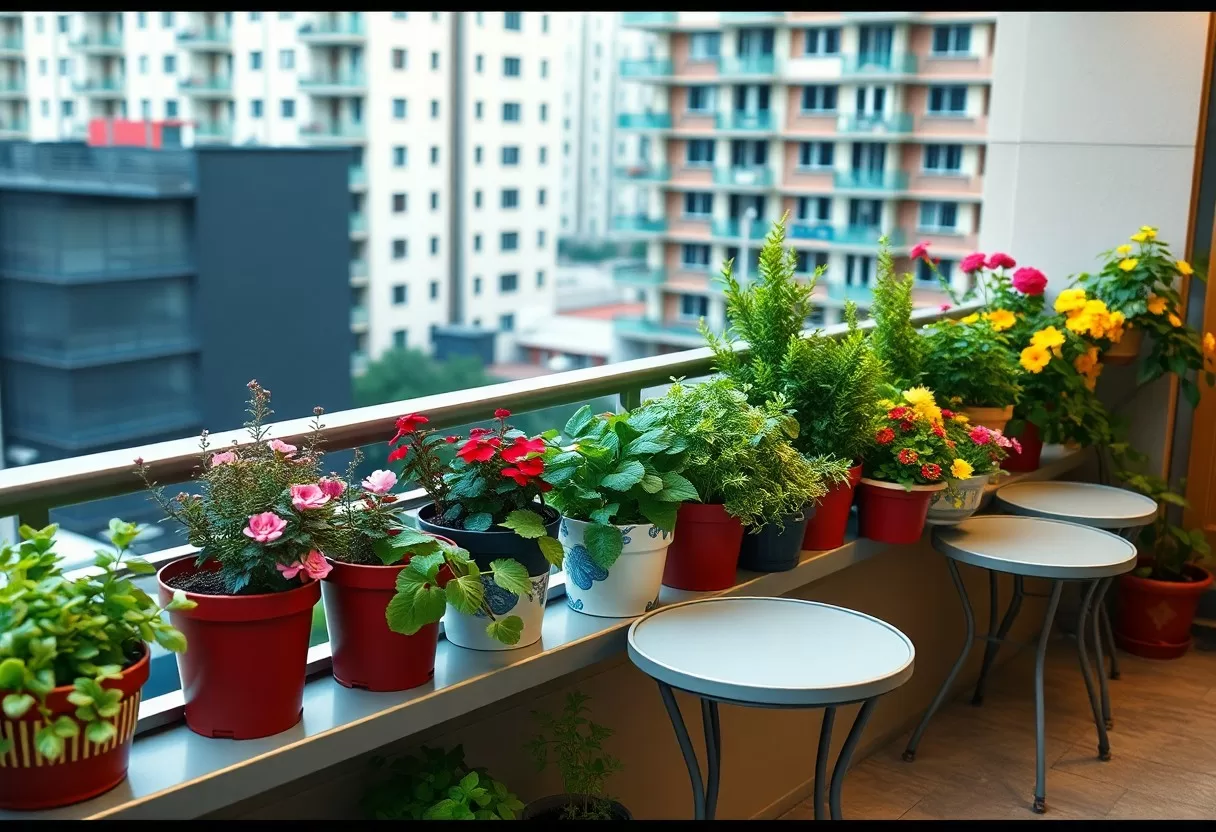Container Gardening For Small Spaces – Grow Big In A Small Garden
Container gardening can transform your tiny space into a thriving garden oasis. Whether you’re dealing with a small balcony, patio, or even a windowsill, you can successfully grow a variety of plants in limited space. By selecting the right containers and choosing ideal plants, you can cultivate your green thumb while maximizing your area. Explore the potential with Container gardening for small spaces and discover how to make the most of your gardening experience.
Key Takeaways:
- Container gardening allows you to maximize space by utilizing pots, planters, and vertical structures to grow a variety of plants.
- Choosing the right container is crucial; ensure that it has adequate drainage, is the appropriate size for the plants, and is made of suitable materials.
- Utilize soil mixes designed specifically for container gardening to provide necessary nutrients and ensure proper drainage.
- Consider companion planting within your containers to enhance growth and deter pests, creating a thriving ecosystem in limited space.
- Regular maintenance, including watering, fertilizing, and pruning, is key to keeping your container garden healthy and productive.

The Magic of Container Gardening: Transforming Small Spaces Into Green Oasis
Container gardening introduces an enchanting charm into your small spaces, allowing you to create a lush sanctuary right outside your door. By utilizing various containers, from traditional pots to repurposed items like old crates or buckets, you can cultivate a vibrant garden that harmonizes with your lifestyle. Every nook and cranny can become a thriving green oasis, no matter how limited your space may be.
Understanding the Benefits of Container Gardening
Container gardening presents numerous advantages tailored for limited spaces. Not only does it allow for easy mobility and rearrangement, but it also provides enhanced drainage, accessibility to sunlight, and improved pest control. You can experiment with different plant combinations, even growing herbs and vegetables right on your balcony or patio. This versatility fosters creativity while also supporting your desire for fresh produce.
Assessing Available Space: Creative Solutions for Tiny Gardens
Analyzing your available space is key to maximizing your garden’s potential. Look beyond traditional planting spots and consider vertical gardening, hanging planters, and tiered shelving to utilize every inch. Balconies, porches, and even window sills can serve as prime locations for your containers. Implementing these creative solutions allows you to turn any overlooked area into a flourishing green retreat.
Visualize your space and explore unconventional areas for container placement. For instance, utilizing wall-mounted shelves for herbs or cascading flowers adds both beauty and functionality. Consider utilizing railings with railing planters to turn your balcony’s edge into a blooming border. Elevate your garden further by integrating stackable containers that enable you to create layered arrangements without occupying additional ground space. These creative approaches can inspire a vibrant, whimsical atmosphere while optimizing your garden’s footprint.
Selecting the Right Containers: Size and Material Matter
Your choice of containers significantly influences your gardening success. The size and material must align with the needs of your plants. A larger container supports more root development, while materials like clay or ceramic provide sturdiness and insulation. For instance, if you’re growing deep-rooted plants, opt for taller pots, whereas shallow-rooted herbs thrive in smaller containers. Selecting the right sizes ensures your plants grow healthy and reach their full potential.
The Best Container Types for Various Plants
Different plants thrive best in specific container types. Here’s a quick guide to optimize your choices:
- Herbs – Choose small pots or window boxes for easy access and drainage.
- Vegetables – Deep containers (12-18 inches) for root crops like carrots and potatoes.
- Annual flowers – Versatile options like hanging baskets for vibrant blooms.
- Perennials – Medium to large pots that allow for more significant root growth.
- Shrub varieties – Require larger, sturdy planters for stability.
Knowing the specific needs of your plants will help ensure their thriving growth and blooming potential.
| Container Type | Best For |
| Small Pots | Herbs |
| Deep Containers | Root Vegetables |
| Hanging Baskets | Annual Flowers |
| Medium to Large Pots | Perennials |
| Large Planters | Shrubs |
Drainage and Soil Considerations for Healthy Growth
Proper drainage and soil quality are vital for flourishing plants in your container garden. Ensuring pots have adequate drainage holes prevents water from pooling and causing root rot, which can be detrimental to your plants. The right soil mix, often with a blend of compost, peat moss, and perlite or vermiculite, promotes aeration and moisture retention, fostering a healthy root environment.
Using well-draining soil mixes not only provides imperative nutrients but also promotes healthy root systems. Incorporating elements such as perlite boosts aeration, while compost enriches the soil with nutrients. Regularly check your containers for excess water and ensure the drainage holes remain unobstructed. Adjusting the soil and drainage conditions according to your plants’ needs lays the foundation for a vibrant, productive garden.
Plant Pairing Strategies: Achieving Balance in Limited Spaces
Maximizing the potential of your small garden requires strategic plant pairing that considers both aesthetics and functionality. Combining plants with complementary growth habits cultivates a visually appealing and productive garden. For instance, pairing tall sunflowers with lower-growing herbs not only provides a stunning visual contrast but also creates a microclimate that supports growth. Focus on plants that enjoy similar light and water conditions to ensure harmony in your container garden.
Companion Planting for Groves of Color and Flavor
Embracing companion planting can transform your garden into vibrant groves of color and flavor. For example, planting tomatoes alongside basil not only enhances tomato growth but also infuses your dishes with aromatic flavors. Furthermore, mixing colorful flowers like marigolds with vegetables deters pests and attracts pollinators, creating a lush and productive environment without compromising space.
Layered Planting Techniques for Vertical Space Optimization
Utilizing layered planting techniques capitalizes on vertical space, allowing you to cultivate an abundance of plants even in the smallest containers. You can stack smaller plants such as lettuce or herbs in front of larger varieties like tomatoes or peppers. This strategic layering not only ensures that all plants receive adequate sunlight but also maximizes your garden’s aesthetic appeal.
Layered planting techniques offer an innovative way to maximize your growing area by taking advantage of vertical space. Consider using vertical planters or tiered shelving to create depth in your garden. For instance, place trailing plants like strawberries or sweet potatoes at the top, allowing them to cascade down and create a beautiful visual effect. Incorporate plants with varied heights, textures, and colors to craft a dynamic garden that stands out while ensuring that the larger plants do not block sunlight from the smaller ones. This method not only boosts your harvest but also transforms your limited space into an impressive living tapestry.

Seasonal Planning: Timing is Everything for Success
To achieve a thriving container garden, timing plays a pivotal role. Understanding the seasonal changes that affect your plants allows you to optimize growth and harvest. Utilize gardening calendars specific to your area to plan when to start seeds indoors, transplant seedlings, or sow directly into containers. For a deeper probe seasonal strategies, check out Container Gardening 101: Growing Food In A Small Space.
Choosing the Right Plants for Every Season
Selecting the appropriate plants for each season enhances the productivity of your container garden. For spring, consider cool-weather crops like lettuce and radishes, while summer thrives with tomatoes and peppers. Fall can bring in kale and turnips, and winter gardening may include herbs in a protected space. Tailoring your selection to seasonal conditions ensures strong growth and plentiful yields.
Techniques for Extending Your Growing Season in Containers
To maximize your harvest, experiment with techniques that extend your growing season. Utilizing cloches, row covers, or cold frames can protect your plants from frost, allowing you to cultivate earlier in the spring and later into the fall. Additionally, employing heat-retaining materials or strategically placing your containers in the sun can help maintain warmth for your plants.
Creating a microclimate with containers is another effective way to prolong your growing season. For instance, placing your pots against a warm wall can shield them from harsh winds and reflect heat, giving your plants a boost when temperatures drop. Similarly, using darker pots can absorb more sunlight, keeping the soil warmer for root development. Implementing these methods not only increases your gardening window but also supports healthier and more robust plant growth.
Maintenance Essentials: Keeping Your Small Garden Thriving
Regular maintenance is key to ensuring your container garden flourishes throughout the growing season. This involves a commitment to consistent watering, appropriate fertilization, and vigilant pest control. By staying on top of these practices, your small garden can produce an impressive bounty, even in limited space. With the right techniques, you’ll cultivate a thriving garden that brings joy and satisfaction all summer long.
Watering and Fertilization Best Practices
Watering your container plants requires a careful balance. Aim to keep the soil consistently moist, but not soggy, as containers can dry out quickly. Fertilize your plants with a balanced, slow-release fertilizer every 4-6 weeks to provide imperative nutrients. For plants with higher nutrient needs, consider supplementing with a liquid fertilizer every couple of weeks, particularly during peak growth periods.
Pest Control Tactics for Container Gardens
Managing pests is vital to the health of your container garden. Regularly inspect your plants for signs of common pests, such as aphids or spider mites. If you spot any intruders, removing them by hand is often effective. Introducing beneficial insects like ladybugs can also help keep pest populations in check. Consider using organic pest controls like neem oil or insecticidal soap for more severe infestations without harming your plants or the environment.
Maintaining a pest-free container garden doesn’t have to be complicated. Incorporate companion planting by placing pest-repelling plants, such as marigolds or basil, near more vulnerable species. This natural tactic can deter pests while enhancing the overall health of your garden. Additionally, keep your containers clean and debris-free, as clutter can become a nesting ground for unwanted pests, allowing you to focus on growing your thriving plants instead of battling infestations.
To wrap up
With this in mind, container gardening offers you a versatile and effective way to maximize your small garden space. By selecting the right containers, plants, and growing techniques, you can enjoy a vibrant and productive garden no matter how limited your area may be. Embrace creativity, make use of vertical space, and choose plants suited for containers to enhance your gardening experience. Your small garden can truly become a flourishing oasis with the right approach and care.
